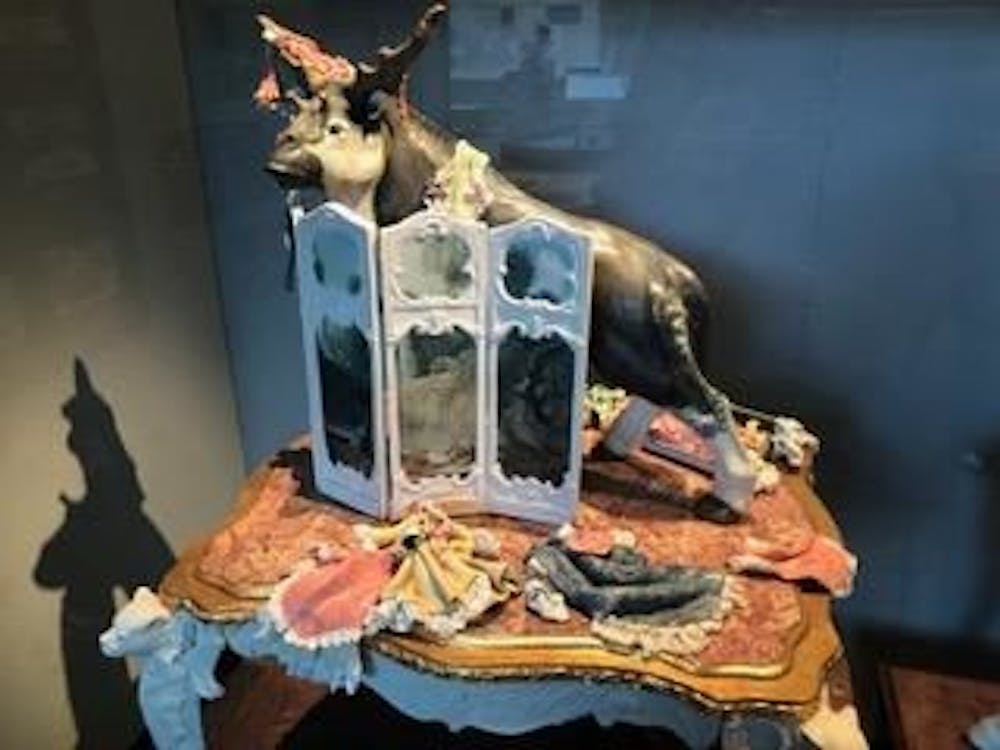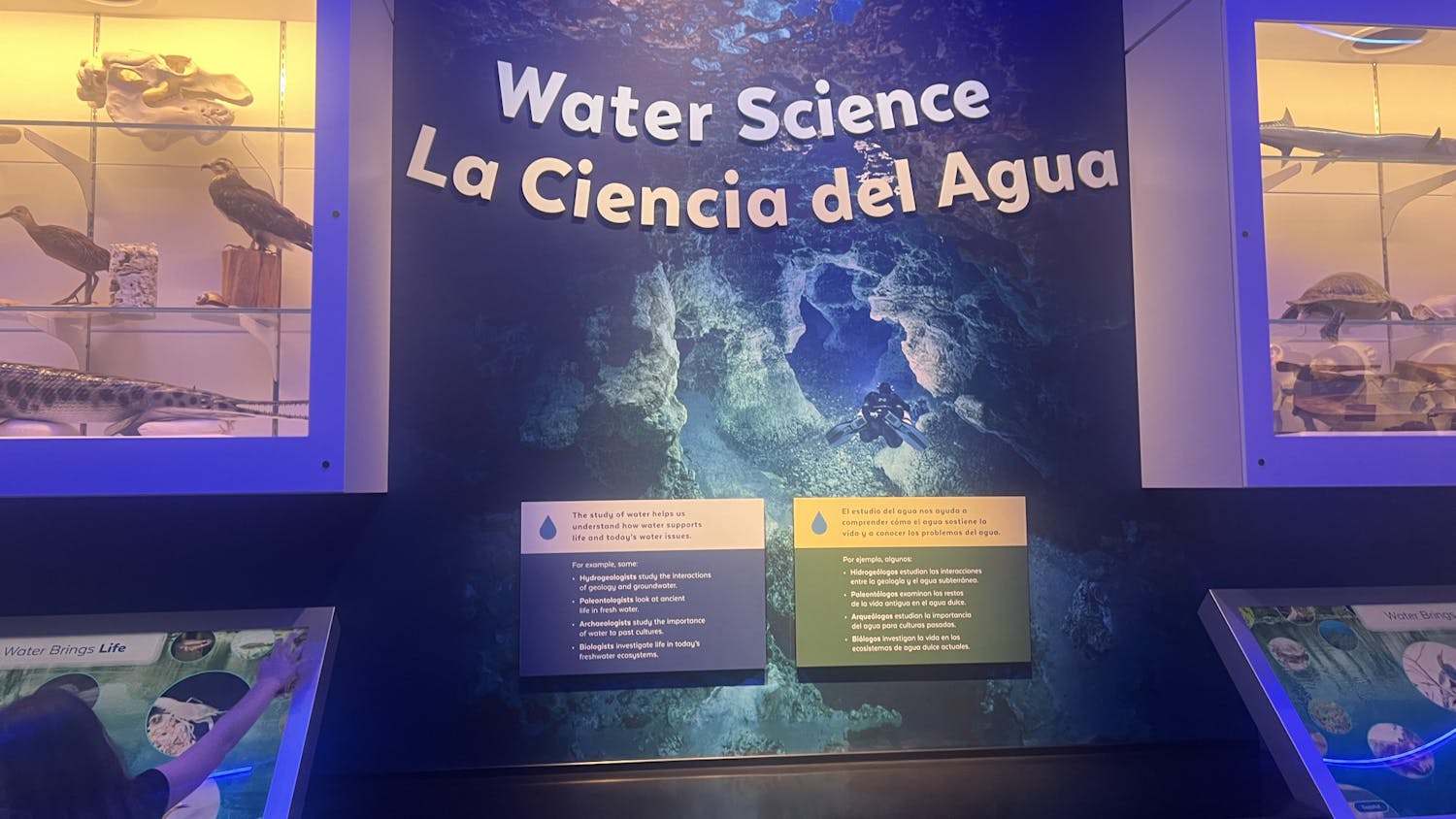Graduate students may write a 40-page paper for a thesis, but UF alumna Ariel Bowman sculpted and painted prehistoric animals for a museum exhibit.
The Florida Museum of Natural History exhibit features the creatures among 18th-century Rococo-style furniture including a bathtub and a piano. Bowman created the exhibit to complete her master’s in ceramics from the UF College of the Arts.
The 18th century was just before humanity had discovered fossils that “changed our view of time and where we fit into nature as a species” during that era, Bowman said.
“I enjoy the impossibility and absurdity of extinct animals interacting with human history,” she said. “The comparison points out the brevity of time that humans have occupied compared to how long animals have been evolving.”
Each sculpture was created using separated clay pieces that were reassembled using a mixture of clay and water. The seam lines were hidden and retextured before being bisque fired. After being fired, the pieces were glazed and adorned with materials to look like bubbles and feathers, according to Bowman.
All five sculptures, including their decorative pedestals, were made by Bowman and can be separated and reconstructed.
Artist renderings of prehistoric animals make it easier for visitors to visualize and connect with the prehistoric world instead of simply relying on fossils, said Tina Choe, exhibit developer at the Florida Museum.

Thalassocnus natans, an extinct semi-aquatic giant sloth from South America six million years ago, relaxes in the piece Baignore sur Pieds (Claw-foot). According to an exhibit panel, bathtubs were considered luxuries in the eighteenth century because of their connection to “civilization.”
Bowman developed the concept during her three years of graduate study in ceramics and started the project in August 2017, after researching and planning throughout the summer.
The humpback whale and Columbian mammoth for the museum’s permanent exhibits were also modeled by Bowman.
She has been invited to gallery exhibitions in Washington, Montana and Minnesota and plans to continue creating paleoart in her Dallas studio.
Paleoart is art that illustrates prehistoric life according to the scientific evidence known at the time of work’s creation.
Bowman will propose the exhibit to art galleries and other natural history museums when the exhibit ends in mid-September.
“The work is unique in that it can relate to viewers in both of these spaces,” said Bowman. “I use science to create my sculptures, so they are able bridge the gap between art and science, existing in both worlds.”
For pictures and information about the exhibit, visit floridamuseum.ufl.edu/exhibits/wondrous/. For more information about Bowman and her work, visit her website at arielbowman.com.
Follow Carly Rogers on Twitter @carly_a_rogers and contact her at carly.arielle.22@ufl.edu.
Haute Couture (High Fashion) includes a folding screen as a reference to changing and transformation through natural selection, according to a exhibit panel. The creature modeling the clothing is sivatherium, a prehistoric giraffe that existed in Africa and India five million years ago.






